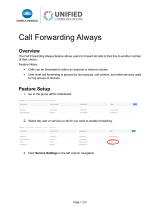
8
1.1 Basic Phone Handset Settings
Selecting the Ring Type
You can select different ring types to distinguish lines or to distinguish your phone from
your neighbor’s phone.
To change the incoming ring type:
1. Press Menu button.
2. Select Settings > Basic > Ring Type.
3. Use the Up and Down arrows to select the desired ring type.
To hear the selected ring type, press the Play soft key.
4. Press the Select soft key to change to the selected ring type.
5. Press to return to the idle display.
Muting the Microphone
During a call, press . The Message Waiting Indicator turns red and a microphone
on the screen indicates that the other party (or parties) cannot hear you.
Microphone Mute applies to all modes: Handset, Headset, and Speakerphone. You
can still hear all other parties while mute is enabled.
To turn off Microphone Mute, press again.
Adjusting the Volume
Press to adjust receiver volume during a call. And pressing these
keys in the idle state also adjusts the ringer volume.
Managing Call Lists
Your Polycom 55/560 phone maintains local lists of missed, received, and placed calls.
Each list can contain 100 entries.
Press the following to access missed, received, and placed call lists.
Down Arrow = Missed Calls
Left Arrow = Received Calls
Right Arrow = Placed Calls
Manage each call list by doing the following:
• To edit the phone number, press the Edit soft key.
• To return the call, press the Dial soft key.
• To view information about the call, press the More soft key followed by the Info soft
key.
Note: If you are in a Business Group, you will need to edit the number and enter a 9
before the phone number.






















